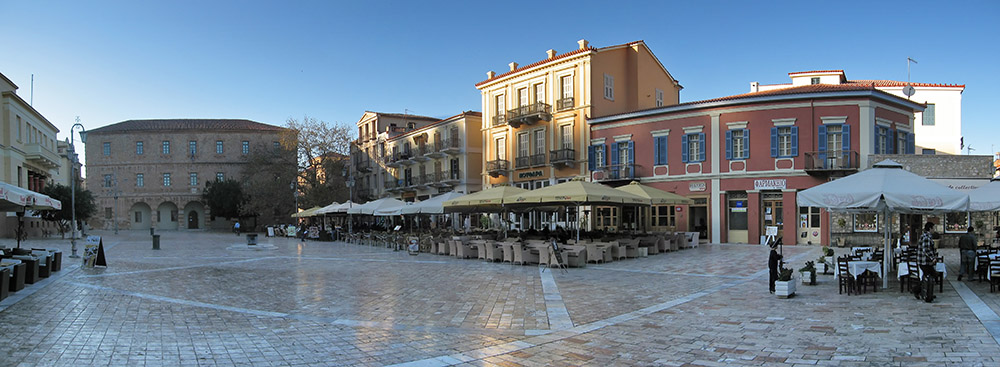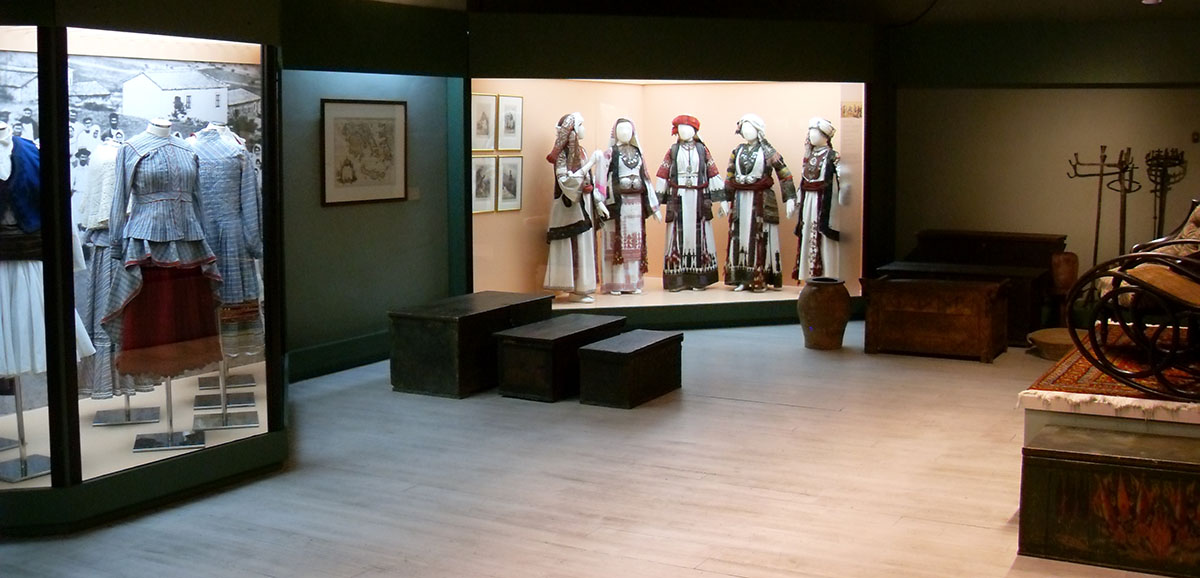
Archaeological Museum of Nafplion
Housed at the imposing Venetian stone-built building, that with its impressive size and its strict, symmetric form, blocks off the western part of Syntagma square. The building was built in 1713, during the period of the 2nd Venetian occupation, by the Proveditor of the fleet, Augustine Sagredos, to be used as a warehouse for the fleet, as stated on the marble latin inscription that is built in its facade. It is one of the most beautiful and best preserved buildings from the Venetian era in Greece.
The new resident exhibition of the museum takes place in two halls of similar top view, on the two floors of the building and is structured in theme units, that present the civilizations which rose in Argolida, from early prehistoric to later ancient times. Findings from Frahthi cavern in Ermionida, verify the transition from hunting to productive economy.

Peloponnesian Folklore Foundation Museum
Right next to Omorfi Poli, the benevolent Peloponnesian Folklore Foundation Museum “V. Papantoniou” was founded in 1974 and is based in Nafplio. Its purpose is to research, preserve, study and promote the later Hellenic civilization.
At the building of 1 King Alexander Road in Nafplio, the Folklife Museum of the Institution is housed, that was awarded in 1981 with the “European Museum of the Year main Award”. In 1999, the Peloponnesian Folklife Institution celebrated at the same time its 25 years, dating back from its foundation, and the dawn of the new millennia.
Art Gallery of Nafplio
The National Art Gallery’s branch in Nafplio, the Museum of Aleksandros Soutsos, was founded in 2004 under the management of Marina Lampraki – Plaka and under the initiative of the eminent citizen of Nafplio and former honorary President of the Inspective Convention, Apostolos Mpotsos. The building, which was granted by the Municipality of Nafplio, was renovated and museologically refurbished by the Public Welfare Institution “Aleksandros S. Onasis”.
This scheduled neoclassical building commands one explicit collection of works inspired by the emancipational struggle of Greek people (Th. Vryzakis, F. Margaritis, Dion. Tsokos, Nik. Gkyzis, Nik. Lytras, a.o.), that emphasize and lend a tangible form to the historic character of the city. The purpose of this painting is to memorize the heroic deeds of Greek people, stripping them however of their realistic character and elevating them on an ideal realm.
Nafplio War Museum
In the area where the first Army Cadet Academy were, the War Museum was inaugurated at the end of 1988. The visitor can follow the history of the Army Cadet School and that of contemporary history of the Greece, the participation of the citizens of Argolida prefecture in all national struggles, from the Greek Revolution against the Ottoman Empire to the liberation from the German occupation troops.
Divided into two floors, the War Museum follows a thematic presentation of the Greek Nation’s struggles.
Archaeological Museum of Mycenae
Mycenae Archaeological Museum is located within the archaeological site of Mycenae. It is structured in such a way as to preserve the material from the excavation of the citadel of Mycenae, its immediate area and the greater surrounding area, as well as to function as an exhibition space for informing the visitors, complementing to their tour.
The museum is housed in a modern building, raised on the foot of Mycenae hill and directly neighboring to the citadel. It was built in a way that secures direct communication with the ancient ruins, segments of which are visible from its large windows, and the visitor will come along them on his course from the entrance to the archaeological site, where the ticket booth stands. It is built upon three layers and expands over a total area of 2000 sq.m. A large part of the museum is dedicated to the safekeeping of the archaeological material originating from the excavational research, conducted in the past and still ongoing.
Archaeological Museum of Argos
At the Archaeological Museum of Argos, artifacts from the area of the city of Argos, the western part of the Argolic plain and the mountain area of Argolis are being housed. They are dated back from the prehistoric periods up until the roman period.
The building complex of the museum is comprised of two sections, one being a preserved monument, “Kallergeio” and the other one being a new wing. The permanent exhibition includes three halls. The biggest hall is located at the ground floor of the museum’s new section. In there, the exhibition follows a chronological line, with findings from the mid-Helladic period to the classical period. Among the most important exhibits are: a large burial compass, a copper armor, iron obolus with their krateftes at the shape of a ship from the geometric period (8th century BC), a portion of a “crateras” (wine container) from the 7th century BC, that depicts the blinding of Polefemos, a lyre made from the shell of a turtle and an attic red-figure vase by the painter Ermonaktas.


